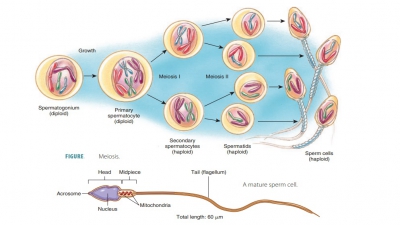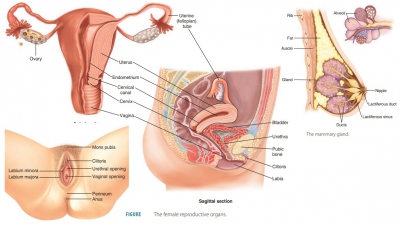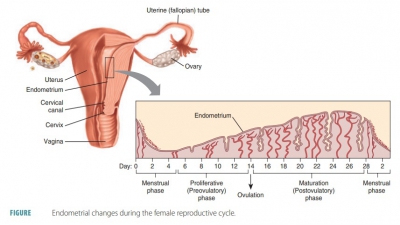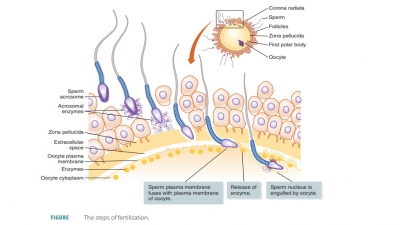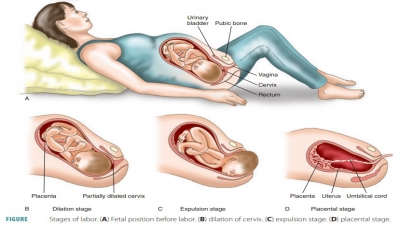Summary
| Home | | Anatomy and Physiology | | Anatomy and Physiology Health Education (APHE) |Chapter: Anatomy and Physiology for Health Professionals: Reproductive System
The reproductive organs produce sex cells and hormones, sustain them, or transport them.
Summary
The reproductive organs produce sex cells and hormones,
sustain them, or transport them. The primary male sex organs are the testes,
which pro-duce sperm cells and male sex hormones. A sperm cell consists of a
head, midpiece, and tail. The male internal accessory organs include the
epididymides, ductus deferentia, seminal vesicles, prostate gland, and
bulbourethral glands. The male external repro-ductive organs include the
scrotum, testes, and penis. Orgasm is the culmination of sexual stimulation.
Emission and ejaculation accompany male orgasm. Male
reproductive functions are controlled by hypo-thalamic and pituitary hormones,
FSH, and LH. Male sex hormones are called androgens, with testosterone the most
important.
The primary female sex organs are the ovaries, which produce
female sex cells and sex hormones. Ovulation is the release of a secondary
oocyte from an ovary. The release of an oocyte involves structures, including
the primordial follicles, and the processes of oogenesis and follicle
maturation. The female internal accessory organs include the uterine tubes,
uterus, and vagina. The female external reproductive organs include the labia
majora, labia minora, clitoris, and vestibule. The hypothalamus, anterior
pituitary gland, and ovaries secrete hormones that control sex cell maturation.
They also control development and maintenance of female secondary sex
characteristic and changes that occur during the monthly repro-ductive cycle.
The most important female sex hor-mones are estrogens and progesterone. The
female reproductive cycle is approximately 28 days in length. A female’s
reproductive life is shorter than that of a male, beginning with menarche
during puberty and ending with menopause.
Birth control is voluntary regulation of the produc-tion of
offspring and when they are conceived. It usu-ally involves some method of contraception. Popular methods include coitus
interruptus, the rhythm method, condoms, diaphragms, cervical caps, chemical
barriers, combined hormone contraceptives, injectable contra-ception, IUDs, and
surgery. Some forms of contracep-tion also protect against STIs. STIs often do
not show symptoms until they have become very serious. Most reproductive
diseases are caused by STIs. Chlamydia, trichomoniasis, HIV, gonorrhea, and
syphilis are exam-ples of diseases that may be transmitted sexually. Pelvic
inflammatory disease may be a complication of gon-orrhea or chlamydia and can
lead to female sterility or ectopic pregnancy. Genital herpes is a common STI
that may be present in 25% to 50% of all American adults. Genital warts are
caused by HPV, which is linked to the development of cervical cancer. The end
of reproductive life in women is signaled by menopause, but in men this does
not occur as significantly, with some men able to father children into their
later years.
Related Topics
